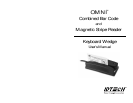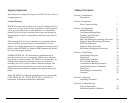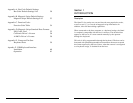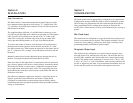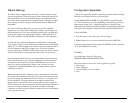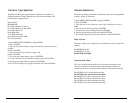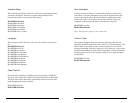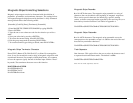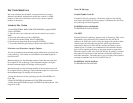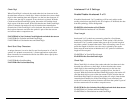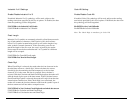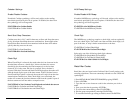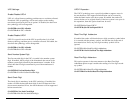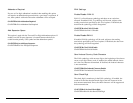
3
2
Section 2
INSTALLATION
Host Connections
The Omni reader is connected between the keyboard input port of the
host computer and the keyboard itself using a “Y” adapter cable. The
“Y” cable has a 5-pin DIN male connector on one end, and a 6-pin mini-
DIN female on the other.
The supplied adapter cable has a 5-pin DIN female connector on one
end, and a 6-pin mini-DIN male connector on the other end. The adapter
cable is used in all installations on one end of the “Y” cable or the
other. This converts the available cable ends for use on either PS/2-
style 6-pin mini-DIN keyboards, or AT-style 5-pin DIN keyboards.
To connect the reader to the host, turn the power off and disconnect
the keyboard from the computer. Insert the male end of the “Y” cable
into the keyboard port. Then connect the keyboard to the female end of
the “Y” connector. This “wedges” the reader between the host and the
keyboard.
Manually-entered data from the keyboard passes through the unit to
the host, leaving the keyboard fully functional at all times.
Data from either of the input heads is transmitted to the host keyboard
port, where it appears to the host as coming directly from the keyboard.
This makes the reader, as a data source, completely transparent to the
host’s application software. In other words, if it is expecting data from
the keyboard, that same data can be entered via the Omni and make no
difference to the host.
Since the host computer’s application software is expecting data to be
input in a particular order and format, the reader’s output can be
configured to simulate the keyboard-entered data stream by adding
terminating characters and special preamble and/or postamble character
strings to scanned data.
Section 3
CONFIGURATION
The Omni reader must be appropriately configured to your application.
Configuration settings enable the reader to work with the host system.
These settings are programmed into the reader through the keyboard.
Once programmed, these configuration settings are stored in the
reader’s non-volatile memory (so they are not affected by the cycling of
power).
Bar Code Input
The reader must be configured to accept the desired bar code data and
format it for transmission to the host. This includes enabling it for the
correct bar code symblogy, setting any check digit, start/stop codes,
preamble/postamble, and min/max symbol length.
Magnetic Stripe Input
The reader must be configured to accept the desired magnetic stripe
data and format it for transmission to the host. The encoded data can
be ANSI, ISO, AAMVA, and California Drivers License magnetic stripe
formats. The reader can be configured to read any track, 1 only, 2 only,
3 only, 1 & 2, 2 & 3, or 1,2 &3. In addition, track start/stop sentinels can
be sent or suppressed and track 2 account number information only can
be selected along with user selectable track separator characters.



